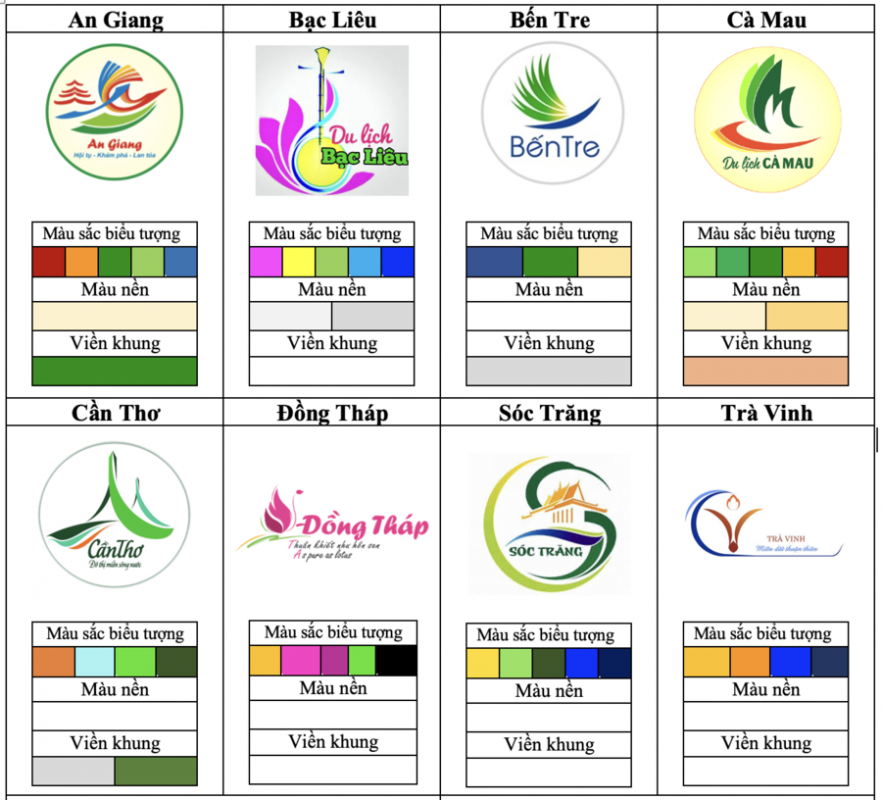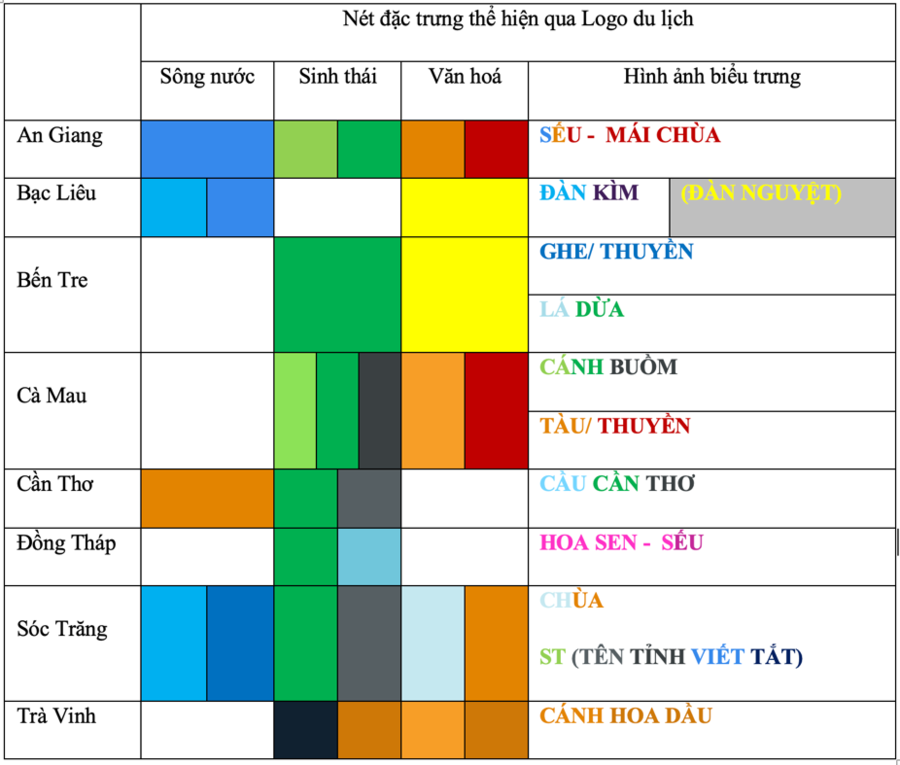The Mekong Delta (MD) is one of Vietnam’s attractive destinations, renowned for its riverine ecosystem, distinctive culture, and unique natural scenic spots. The tourism logos of the provinces in this region are not only symbols of identification but also reflect the unique cultural, natural, and historical values of each locality.
Within the project “BRAND IDENTITY DESIGN FOR THE HO CHI MINH CITY REGION AND 13 MEKONG DELTA PROVINCES,” the research team has undertaken steps to analyze the tourism logo symbols of the Mekong Delta provinces. Specifically:
Analysis of Tourism Logo Symbols of Mekong Delta Provinces

Key Characteristics Reflected in Tourism Logos.
Here are the key characteristics expressed through the tourism logos of several Mekong Delta provinces:
An Giang – Crane & Pagoda Roof An Giang is distinguished by the image of the Sarus Crane – a rare bird species associated with the Búng Bình Thiên ecosystem and the Trà Sư Cajuput Forest. The pagoda roof in the logo symbolizes the Khmer Theravada Buddhist culture, particularly famous pagodas like Vĩnh Tràng Pagoda and Xà Tón (Bat) Pagoda.
Bạc Liêu – Đàn Kìm (Moon Lute) Bạc Liêu is closely associated with “đờn ca tài tử” (Southern Vietnamese amateur music), a UNESCO Intangible Cultural Heritage of Humanity, in which the “đàn kìm” (also known as “đàn nguyệt” or moon lute) is a characteristic instrument. This symbol represents the artistic spirit and appreciation for traditional cultural values of this region.
Bến Tre – Boat & Coconut Leaf Bến Tre is known as the “land of coconuts,” with the symbol of the coconut leaf appearing in its logo to emphasize the role of the coconut tree in local economic and cultural life. The boat represents the characteristic orchard tourism and the intricate canal system of the province.
Cà Mau – Sail & Boat/Ship Cà Mau’s logo features a sail, symbolizing its position as the southernmost point of the country and its history of maritime exploration and island reclamation. The image of a boat/ship represents the province’s fishing industry and mangrove forest ecotourism.
Cần Thơ – Cần Thơ Bridge The Cần Thơ Bridge is a modern symbol of this central city of the Mekong Delta region. It is not only an important transportation structure but also represents economic development and the connection between the western provinces and the rest of the country.
Đồng Tháp – Lotus & Crane The lotus is the iconic flower of Đồng Tháp, representing purity and strong vitality. Additionally, the Sarus Crane is also chosen as a characteristic image, associated with the Tràm Chim National Park.
Sóc Trăng – Pagoda Sóc Trăng is a province with a large Khmer population, thus the image of a Khmer pagoda is used in its logo to represent the unique local cultural identity, especially its system of pagodas such as Dơi (Bat) Pagoda and Chén Kiểu (Clay Bowl) Pagoda.
Trà Vinh – Dipterocarpus Flower Petal Trà Vinh is highlighted by the symbol of a Dipterocarpus flower petal, representing the mangrove forest ecosystem, while also expressing sustainable development and harmony with nature.

Tourism Logos Illustrated Through Key Characteristics.
In summary, the tourism logo system of the Mekong Delta provinces is not only symbolic but also a powerful communication tool that helps promote the image of these destinations. Each locality chooses its most characteristic images to express its strengths, ranging from ecology and riverine landscapes to traditional culture.
Building a unified tourism brand identity helps enhance the position of the Mekong Delta (MD) on both Vietnamese and international tourism maps, attracting more domestic and international tourists to explore this land.



